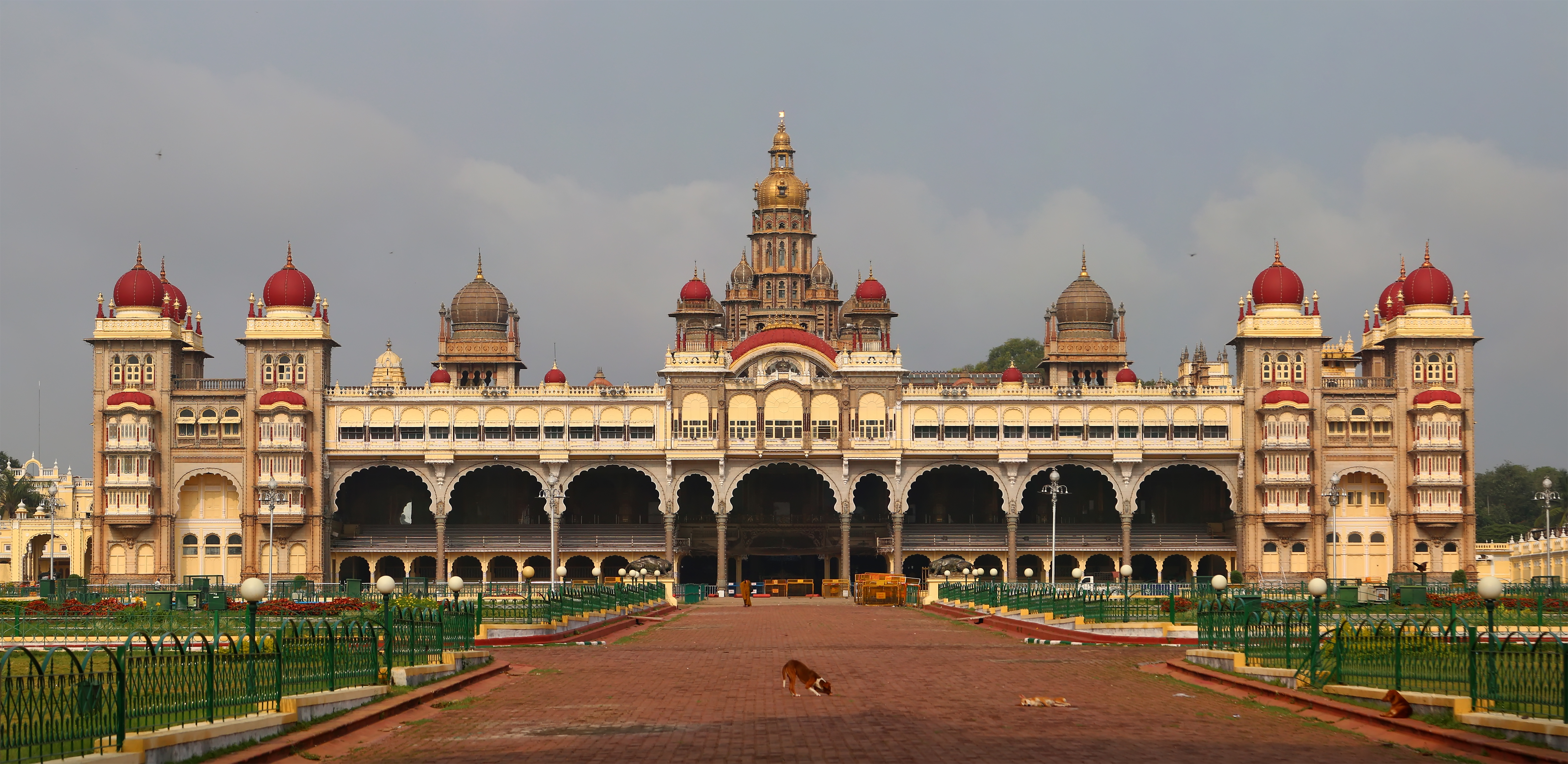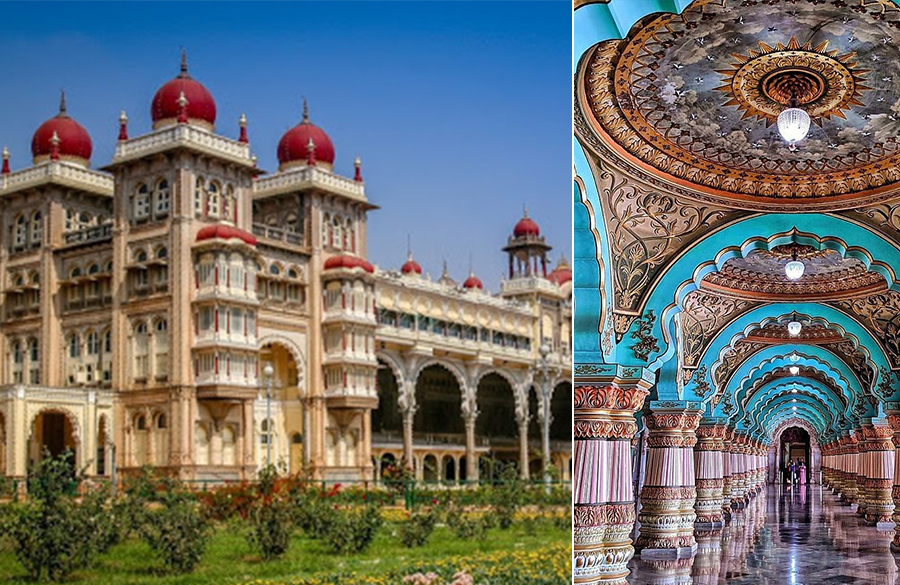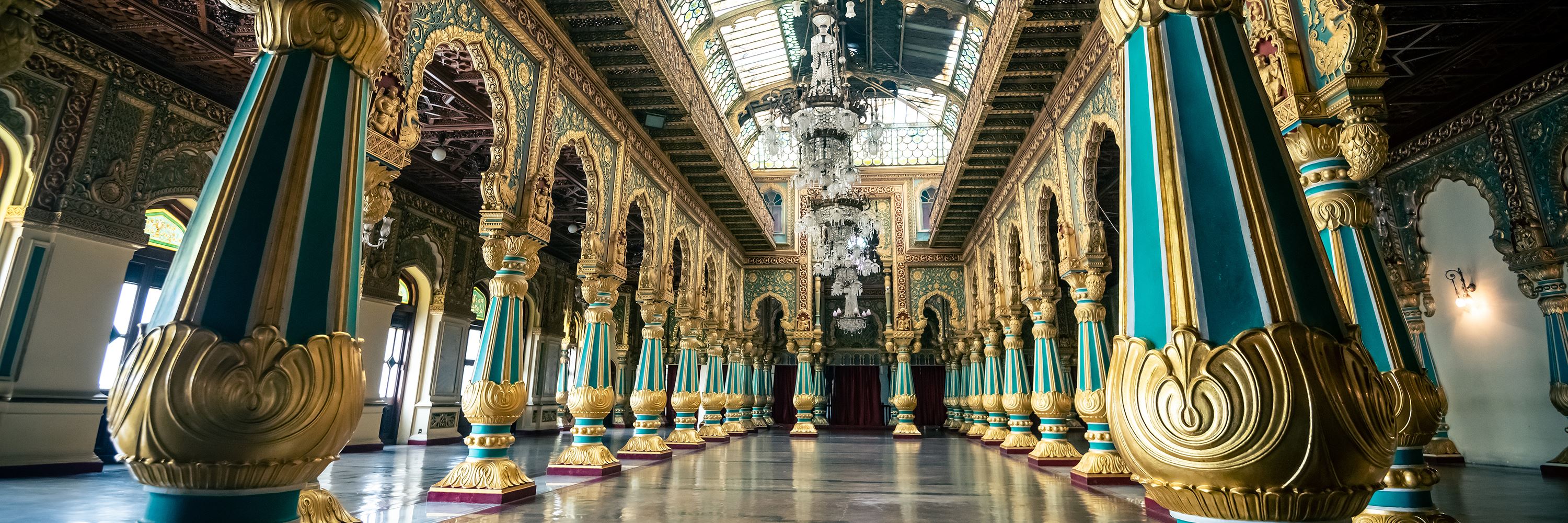MYSORE PALACE
Through this blog, you all know about all the details regarding this palace like its history, timings, entry fees, and other interesting facts.

Mysore Palace also known as the Amba Vilas Palace is one of the most magnificent and largest palaces in India. It is situated in the southern state of Karnataka. It is a historical palace and a royal residence (house) and it used to be the official residence of the Wadiyar dynasty, the rulers of Mysore from the year 1399 to 1950.
This grand palace is located in the heart of Mysore city and attracts visitors from across the world. This Grand palace is commonly described as the ‘city of palaces, and there are seven palaces including this one. The land on which this palace now stands was originally known as “mysuru” which means “citadel”. Mysore Palace is being one of the prime attractions in India, after the Taj Mahal, with more than six million annual visitors.
Information on Mysore Palace

- Name: Mysore Palace also known as Amber Vilas Palace
- Location: Sayyaji Rao Road
- Made by: Maharani Kempananjammanni Devi and Maharaja Krishnaraja Wodeyar IV
- Year of Establishment: In the year 1912
- Timings: 10:00 am to 5:30 pm; every day
- Entry fees: Rs.70 for adults; Rs.30 for kids above 7 years and below 12 years
- Still and video cameras: Not allowed inside the palace
- The nearest Railway Station: is Mysore Junction about 2km
- Architect: Henry Irwin
- Architectural style: Indo – Saracenic
- Status: A palace managed by the Government of Karnataka and the official residence of the Wadiyar Dynasty
- Cost of construction: 41.47 lakhs in the year 1912
- Dimensions: Length(245 feet) x Width(156 feet) x Height(145 feet) of the gold plated dome from the ground
- Best time to visit: During Dussehra Celebrations
History of MYSORE PALACE
The palace had its foundation laid way back in the 14th century by the Wodeyars and the Wadiyars, the royal family of the Mysore, and it is believed that the Yaduraya Wodeyar, the first ruler of the Mysore Kingdom who built a palace in Puragiri aka the Old Fort during his reign. This palace has been demolished and reconstructed multiple times over a period of six centuries.
The palace was a wooden fortress that was struck by the lightning in the year 1638 and reconstructed under the rein of Kantirava Narasa Raja Wodeyar. In the year 1793 AD, when Tipu Sultan took over the Wodeyar Dynasty, he demolished the palace and reconstructed it. In the year 1799, soon after the death of Tipu Sultan, the palace came under Krishnaraja Wodeyar III, who redesigned the palace as per the Hindu architecture style.
Sadly, in the year 1897, the palace was destroyed by a fire during the wedding ceremony of Princess Jayalakshmmanni. Again, Maharaja Krishnaraja Wodeyar IV and her mother Maharani Kempananjammanni Devi decided to rebuild the palace. The task of revamping the palace was commissioned by a British architect named Henry Irwin, who designed and completed this palace in the year 1912, at a whooping cost of over 41 lakh Indian rupees. Further expansions were done and a Public Durbar Hall wing was added to the palace under the reign of Jayachamarajendra Wadiyar during the year the 1930s.
Attractions inside the MYSORE PALACE

- A collection of traditional dolls named The Gombe Thotti or Doll’s Pavilion.
- Golden Howdah is the Maharaja’s elephant seat which is made up of 85 kilograms of gold.
- Public Durbar Hall is a large hall where the Maharajas are used to address the public.
- There is a brass gate that serves as the main entrance to the palace named Elephant Gate or Ane Bagilu.
- Attractive temples inside the palace.
Nearby places around Mysore Palace for a visit
- Dodda Gadiyaara– about 260m
- Badsha Bazaar– about 800m
- Devaraja Market– about 950m
- Karanji Lake– about 2.3km
- Philomena Church– about 2.1km

